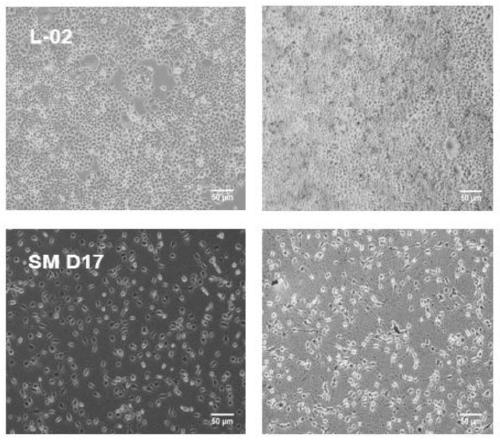Method for inducing differentiation of human adipose derived stromal cells into liver cells through micromolecules
A mesenchymal stem cell and small molecule technology, applied in the field of small chemical molecules to induce human adipose-derived mesenchymal stem cells to differentiate into liver-like cells, can solve the problem of long-term liver cells
- Summary
- Abstract
- Description
- Claims
- Application Information
AI Technical Summary
Problems solved by technology
Method used
Image
Examples
Embodiment Construction
[0027] The present invention will be described in detail below in combination with specific embodiments.
[0028] 1. Induction of Definitive Endoderm (DE) cells
[0029] (1) Select the fourth-generation hAD-MSCs human adipose-derived mesenchymal stem cells as seed cells, and digest them for later use;
[0030] (2) Cells in the experimental group and the control group were divided into 5×10 5 The density of cells / well was seeded in a 6-well plate, and hAD-MSCs medium was added to 2ml / well, and cultured for 24h;
[0031] (3) Discard the medium, wash once with PBS, add F12-DMEM Duchenne's modified Eagle medium containing 0.5% DMSO and 2% serum: nutrient mixture F-12 medium, 2ml / well, and induce for 24h;
[0032] (4) Discard the induction medium containing 0.5% DMSO, wash once with PBS, add CHIR99021 (3μM) (C 22 h 18 Cl 2 N 8 ) F12-DMEM medium containing 2% serum, 2ml / well, induced for 24h;
[0033] (5) Discard the F12-DMEM medium containing 2% serum containing 3 μM CHIR990...
PUM
 Login to View More
Login to View More Abstract
Description
Claims
Application Information
 Login to View More
Login to View More - R&D
- Intellectual Property
- Life Sciences
- Materials
- Tech Scout
- Unparalleled Data Quality
- Higher Quality Content
- 60% Fewer Hallucinations
Browse by: Latest US Patents, China's latest patents, Technical Efficacy Thesaurus, Application Domain, Technology Topic, Popular Technical Reports.
© 2025 PatSnap. All rights reserved.Legal|Privacy policy|Modern Slavery Act Transparency Statement|Sitemap|About US| Contact US: help@patsnap.com



